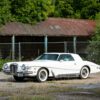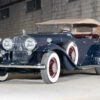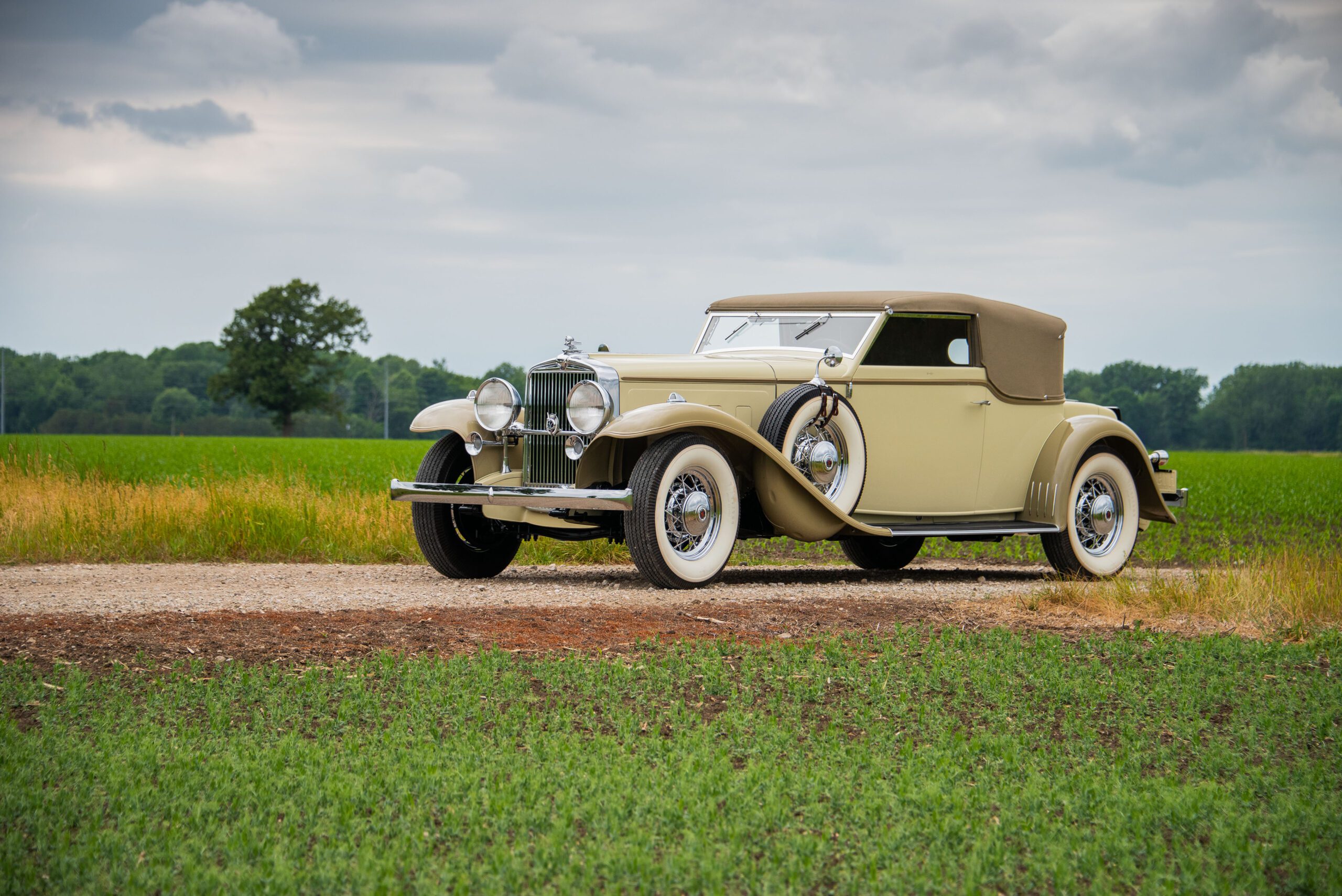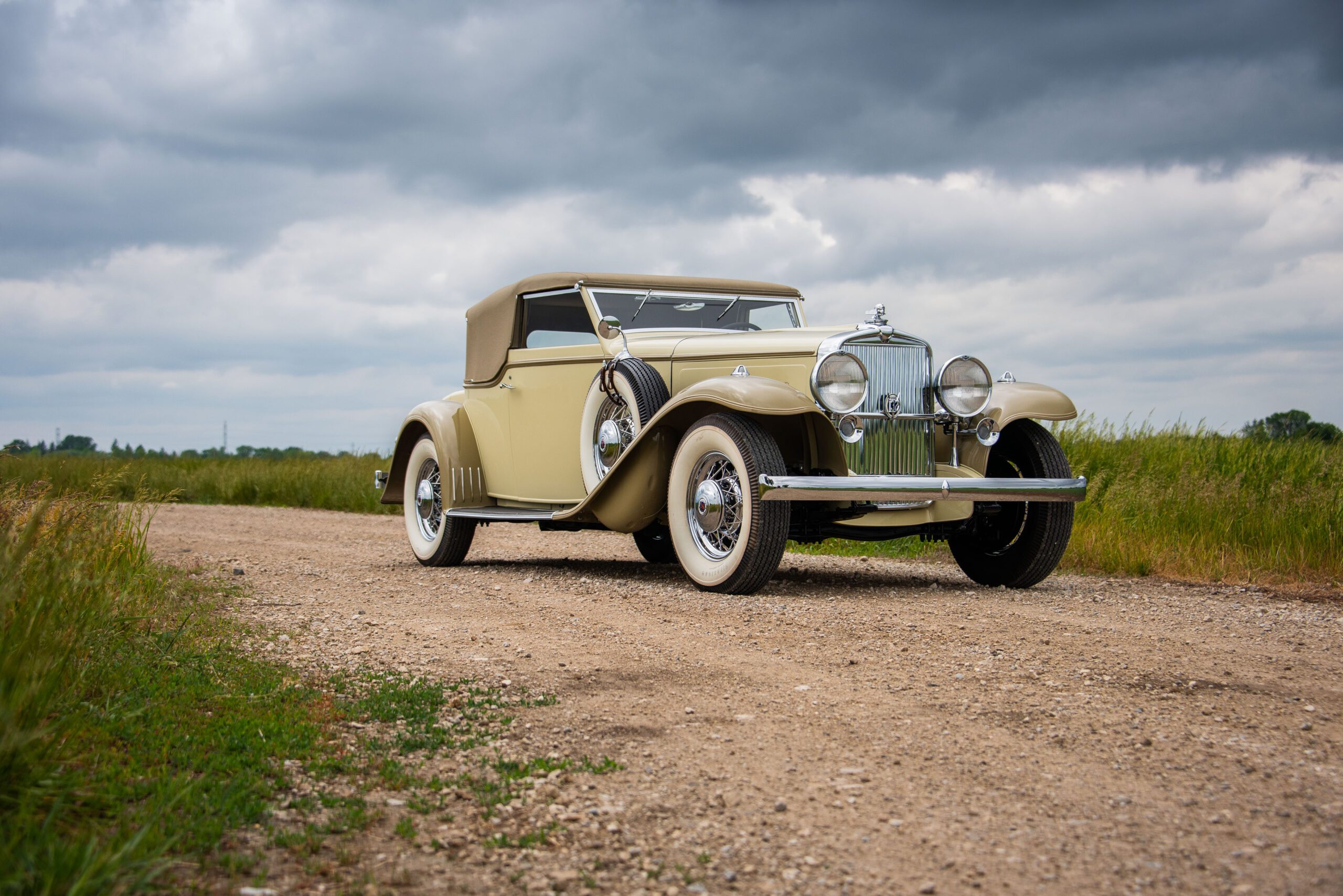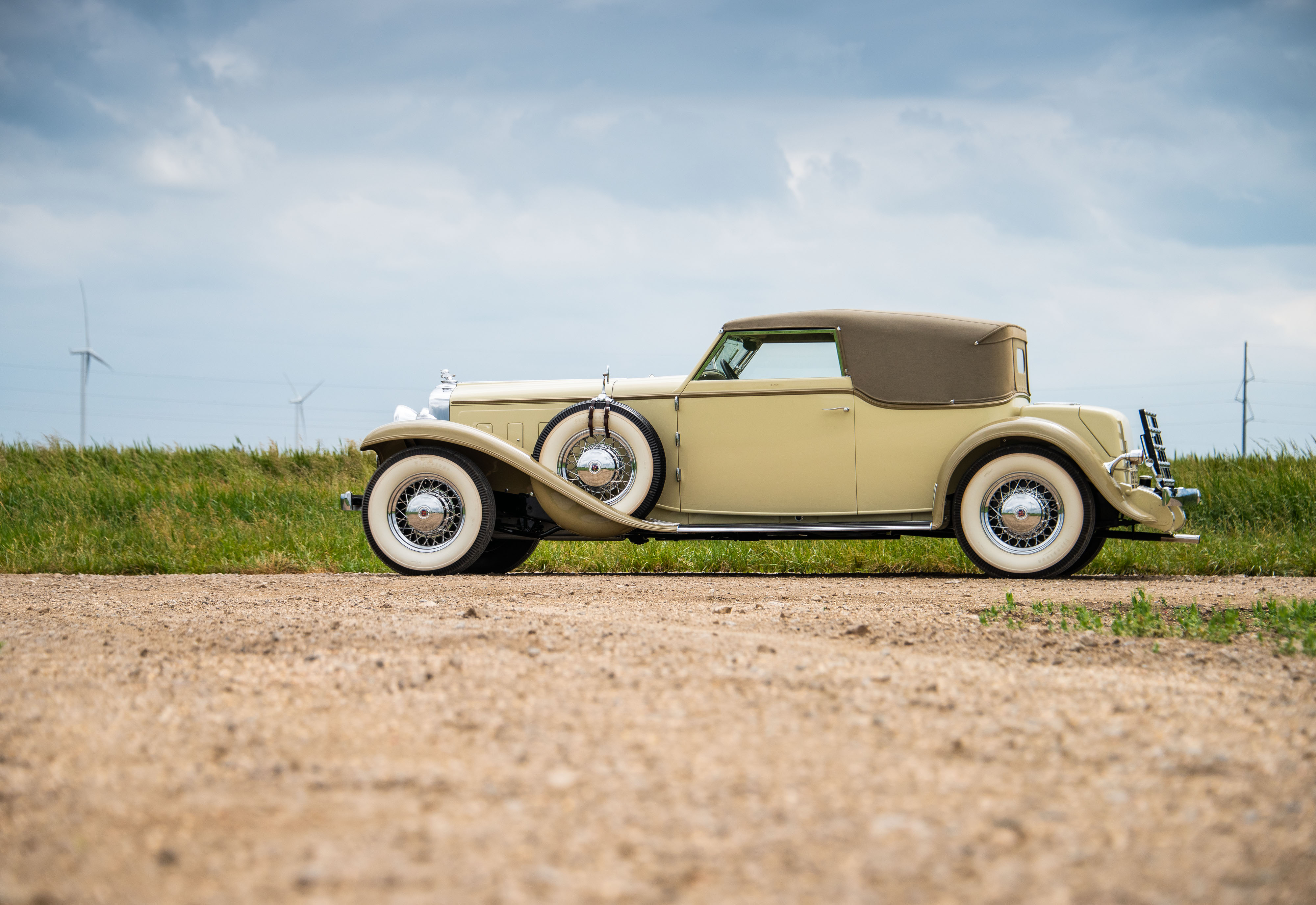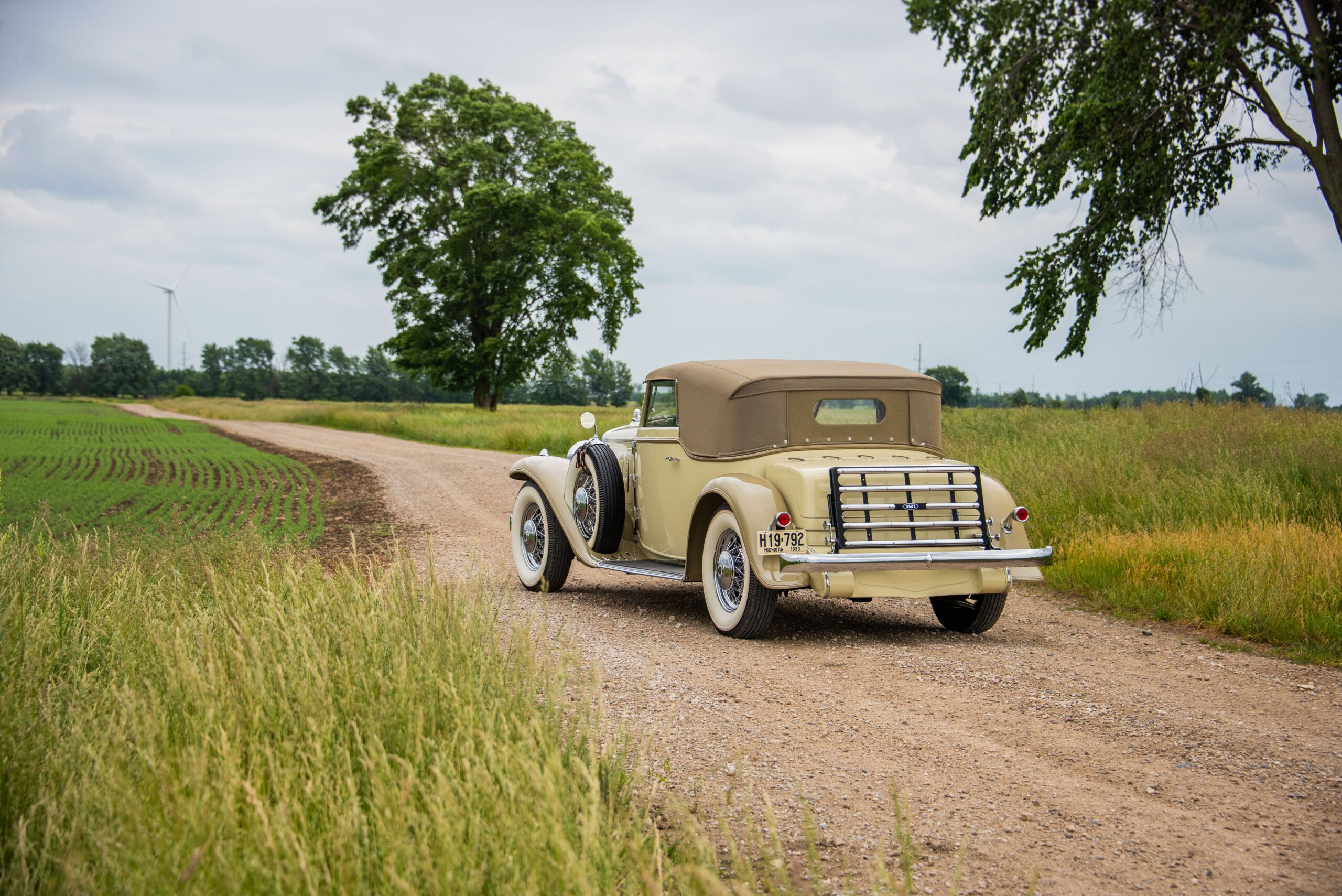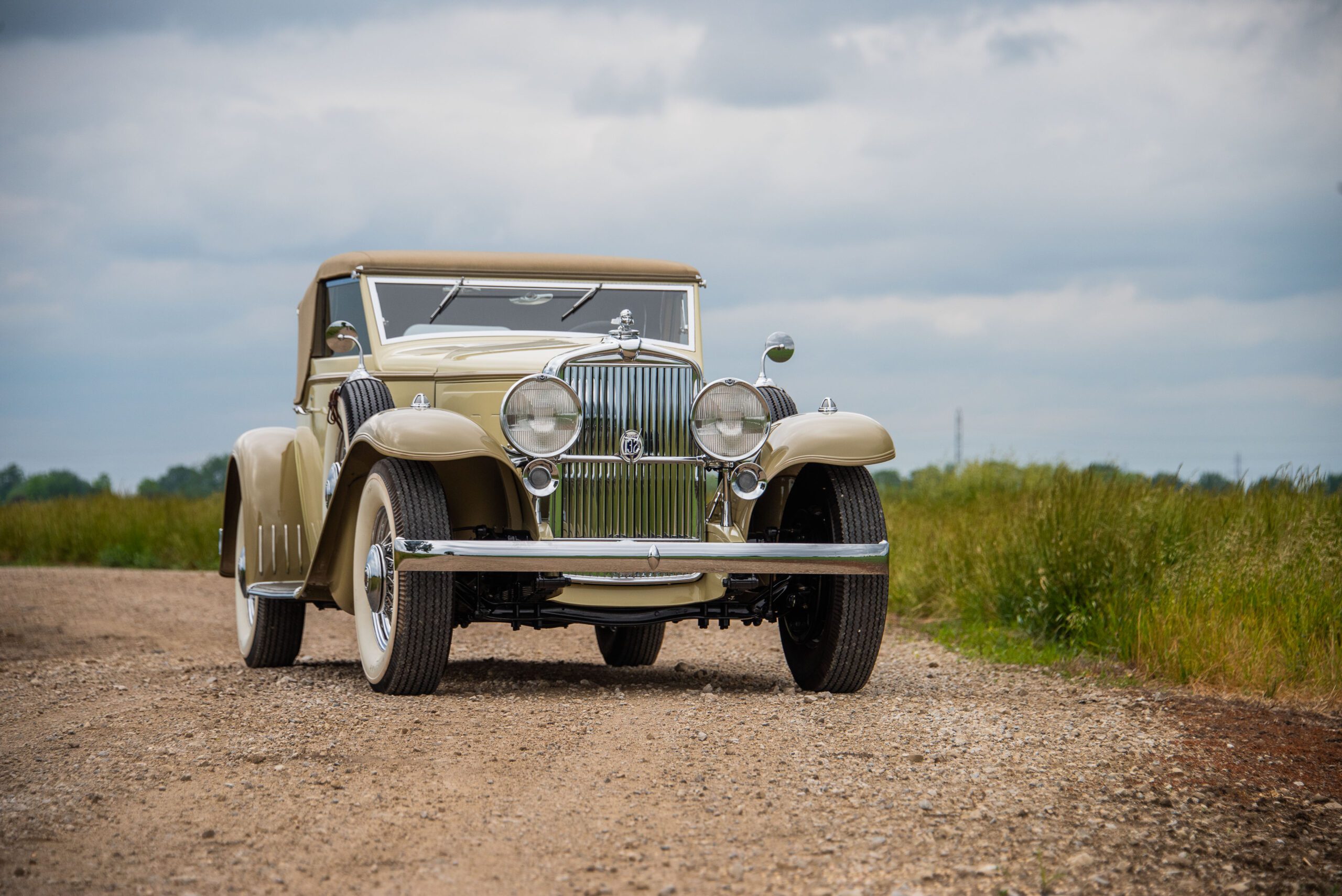Unlike its larger competitors, Indianapolis automaker Stutz faced financial constraints that prevented them from developing new V-12 or V-16 engines. Instead, they responded to these multi-cylinder powerhouses with the DV-32. This impressive engine was based on the existing 322-cubic-inch BB engine and skillfully reworked by Charles “Pop” Greuter.
Greuter added double overhead camshafts and angled valves above hemispherical combustion chambers, resulting in a configuration that boasted four valves per cylinder, totaling 32 valves—hence the name “Dual Valve-32.” The upgraded engine generated approximately 125 horsepower, delivering a horsepower-per-cubic-inch ratio similar to that of the Duesenberg Model J. Power was transmitted through a Warner four-speed transmission. Despite its heavy bodywork and long chassis, the DV-32 proved to be swift and versatile, capable of reaching speeds of up to 80 mph.
Stutz’s production of the DV-32 was limited, with only around 200 examples manufactured before the company faded into oblivion in 1935. Only a select few of these vehicles featured custom coachwork, making them highly sought after today due to their combination of power and beauty. These cars represent a magnificent final effort by “The Car That Made Good In a Day.”
The DV-32 showcased here was custom-bodied by the renowned Rollston of New York City. Rollston was celebrated for their exceptional design versatility and the outstanding build quality of their creations on various prestigious chassis during the Classic Era.
While Rollston was well-known for their elegant convertible victorias, which typically embodied a formal aesthetic, they also produced several unique versions of this style on the DV-32. The car in question, however, was one of only two examples built with a special design that featured a steeply raked windshield. This distinctive feature lowered the roofline and visually elongated the car, resulting in an exceptionally impressive appearance.
Additionally, Rollston’s signature doors extended down to cover the frame rails, and the 1933 DV-32’s faired-in fender lights and aesthetically pleasing, unified dashboard arrangement added further allure to this particular model. In fact, these elements combine to make it one of the most beautiful DV-32s ever created, and indeed, one of the most captivating Stutz automobiles overall.



